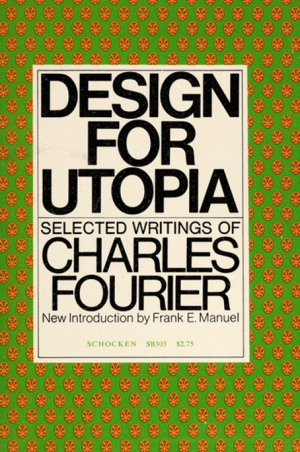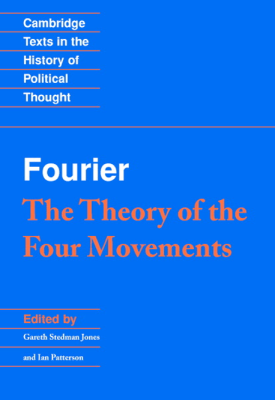Charles Fourier envisioned cooperative communities, which he called phalansteries, where labor, resources, and pleasures were shared in harmony with human passions. He believed social transformation would come via voluntary association and the creative alignment of work with personal fulfillment. His emphasis on collective well-being, mutual support, and the restructuring of economic life laid important groundwork for communitarian principles and practices.

Charles Fourier (1772–1837), a French utopian socialist and philosopher, is recognized as one of the most imaginative and radical thinkers in the history of communitarian thought. His vision of a harmonious society, often referred to as “Harmony” or “Phalanstery,” embodies principles that resonate deeply with the Communitarian Union’s values, particularly Right Livelihood, Liberated Love, Communal Living, and the One Cloak Tenets of sharing. Fourier’s contributions go beyond mere theory, offering a blueprint for a world of mutual cooperation, abundance, and shared prosperity.
Vision of Society
The Phalanstery as a Model of Communal Living
At the heart of Fourier’s philosophy is the Phalanstery, which at its core, is a self-sustaining, cooperative community designed to liberate human passions and align them with collective well-being. Unlike traditional notions of utopia that require people to subdue their desires, Fourier believed that every human passion had a purpose in building an ideal society.
Communal Living Principles in the Phalanstery:
- Collective Provisioning: Resources, labor, and wealth are shared for the common good. This principle is echoed in the One Cloak Tenet of “Shared Prosperity” and the Communitarian Union’s vision of merging financial and material resources in collaborative living.
- Uniting Work with Passion (Right Livelihood): Fourier proposed that labor should be joyful, not burdensome. By organizing society into “series” of laborers who pursue work they love, he laid a conceptual foundation for the Communitarian Union’s Right Livelihood practices. Fourier insisted that work could be designed and organized in such a way that it was not merely toil, but a fulfilling, cooperative activity that contributed to personal development and social harmony.
- Decentralized Authority: Rather than top-down control, the Phalanstery was to be organized around voluntary collaboration, self-management, and distributed leadership, which are principles mirrored in Communitarian Union co-living models.
This collection of Fourier’s writings draws us into his bold proposals for shared living, economic cooperation, and the free expression of human desires. It gathers his most compelling ideas, including those from The Theory of the Four Movements, and frames them in ways that speak to our ongoing search for communitarian pathways. Through these selections, we join a long tradition of reimagining society around joy, mutual care, and the creativity of association.
Right Livelihood
Joyful Labour in Service to the Whole
Fourier’s concept of labor aligns with the Communitarian Union’s emphasis on Right Livelihood. His radical idea was that humans should pursue work that satisfies their natural desires and aptitudes. In contrast to the exploitative nature of wage labor, Fourier envisioned a system where people pursue their true calling in service to the community.
Key Aspects of Right Livelihood in Fourier’s Vision:
- Harmony of Desires: Each individual has unique passions, and if society is structured correctly, those passions will naturally align with community needs. Fourier identified 12 basic passions that he believed would drive labor in his Phalanstery.
- Productive Joy: Unlike modern conceptions of “work-life balance,” Fourier’s Right Livelihood does not separate work from leisure. He envisioned a playful, joyful approach to labor, where all forms of necessary work (like cleaning, preparing meals, and food production) would be performed with enthusiasm.
- Work in Series: The “series” was a group of people engaged in a specific form of work. Each series was self-organized, allowing people to engage in multiple types of labor each day, preventing boredom and over-specialization. This concept of fluid, diverse labor directly relates to the Right Livelihood cooperative enterprises envisioned by the Communitarian Union.
Liberated Love
Freedom of Affection & Relationships
Perhaps one of Fourier’s most controversial contributions is his radical view on love and relationships. While most social reformers of his time sought to impose stricter moral codes, Fourier argued for the “liberation of love” as a path to human flourishing.
Principles of Liberated Love:
- Freedom of Affection: Fourier rejected monogamous exclusivity as a constraint on human happiness. He proposed a system of “passionate attraction,” where people were free to pursue loving connections without shame or restriction. This resonates with the Communitarian Union’s principles and practices of Liberated Love where relationships are grounded in transparency, mutual care, and freedom from coercion.
- End of Patriarchy: Fourier was a feminist ahead of his time, advocating for gender equality in all aspects of society, including love. He argued that the treatment of women in society was a key indicator of a civilization’s development. His critique of patriarchal oppression aligns with Communitarian principles of mutual respect and free association.
- Love and Labor Integration: Love was not separate from labor but an extension of it. Just as people pursued joyful work in series, they were also free to cultivate relationships within the communal context. This perspective ties into the Communitarian Union’s aim to merge personal development, love, and labor into a cohesive, balanced lifestyle, known within communitarian circles as “Deep Union”.
In this foundational text, we encounter Fourier’s vision that our passions are natural forces meant to guide us toward cooperative living. He challenges the constraints of existing society and imagines phalansteries where work is joyful, resources are shared, and human bonds thrive. This work invites us to see communitarian life as the fulfillment of our innate drive for balance, creativity, and collective well-being
One Cloak Tenets of Sharing
Principles of ‘Common’ Wealth Collaborative Provisioning
Fourier’s vision of collective wealth and shared provisioning resonates directly with the Communitarian Union’s One Cloak Tenet of “Common” Wealth Shared Prosperity. In his Phalanstery, material wealth was shared according to three principles:
- Contribution-based Wealth Distribution: Wealth was distributed based on three factors: labor, capital, and talent. While some saw this as hierarchical, Fourier saw it as an equitable means of ensuring that those who contribute the most effort, skill, or resources receive a fair share of the collective wealth.
- Communal Kitchens and Shared Resources: Fourier envisioned communal kitchens where meals were prepared for the entire community. This mirrors the “Collaborative Provisioning” practices seen in communal living models, where food, tools, and space are shared rather than owned individually.
- Abundance for All: Fourier believed in abundance rather than scarcity. His vision of wealth-sharing was one in which people would have more than enough of everything they needed, contrasting with capitalist systems that create artificial scarcity to maintain profit. This notion of “abundance logic” is reflected in the Communitarian Union’s pursuit of shared prosperity.
The Sea Turns to Lemonade
Fourier's Imaginative Promise
One of Fourier’s most memorable and misunderstood ideas is his prediction that, once humanity achieved social harmony, the seas would turn into lemonade. While this idea has been dismissed as fanciful, it carries symbolic meaning.
Symbolic Interpretation of the Lemonade Sea:
- Abundance and Delight: The transformation of the sea into lemonade represents the fulfillment of human desires for sweetness, joy, and delight. It reflects Fourier’s belief that harmony with nature would create an Eden-like abundance where human needs were met not just for survival but for pleasure.
- Ecological Regeneration: Some modern interpretations view this transformation as a metaphor for ecological restoration. When human society realigns with natural laws (as seen in Communitarian Union principles), the Earth itself will shift into a state of natural abundance.
- Symbol of Radical Possibility: The lemonade sea reminds us to think beyond what is “realistic” and to envision a world of radical transformation. This is deeply aligned with the Communitarian Union’s transformative vision for new social systems based on love, care, and sharing.
Fourier's Relevant Writings
To fully appreciate Fourier’s contributions, it’s essential to explore his most important writings. These texts offer rich insights into his communitarian vision.
The Theory of the Four Movements and the General Destinies (1808)
In this foundational text, Fourier outlines his vision for societal transformation, introducing key concepts such as Phalanxes and Attractive Labor.
The New Industrial World (1829)
This work provides a detailed blueprint for implementing Fourier’s ideas, emphasizing cooperative economics and the potential for a harmonious society.
Design for Utopia (1848)
Compiling Fourier’s later writings, this book delves into the philosophical underpinnings of his theories and their application to real-world communities.
Fourier’s Continuing Influence
Charles Fourier’s vision of cooperative living, joyful labor, and liberated love continues to inspire communitarian movements today. His ideas of abundance, shared wealth, and Right Livelihood serve as a model for the Communitarian Union’s principles and practices. The dream of the sea turning to lemonade, while often ridiculed, remains a powerful symbol of radical hope and the possibility of a transformed world. Fourier’s call to liberate human passions and align them with collective well-being is echoed in the Communitarian Union’s mission to build a society based on love, contribution, and ‘common’ wealth.
By embracing Fourier’s legacy, we remember that true transformation requires both practical application and bold imagination. As we build the future of collaborative living, his message remains clear: believe in abundance, align with passion, and dare to dream of lemonade seas.


